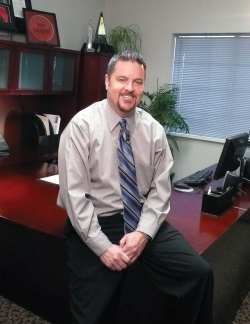Recently, we talked with Mike Doherty, President/CEO of EMCO High Voltage Corp.

Electronic Products: EMCO’s AG Series converters line won Electronic Products’ Product of the Year Award. What internal processes have helped make this kind of recognition possible?
Mike Doherty: EMCO is more than 40 years old. Years ago, I made a strategic decision to change the direction of the company to de-emphasize design-to-spec customer requests, and focus much of our technical team on design optimization. For example, we create standard product lines that optimize performance to fit the market, such as very-low-noise high-voltage dc/dc converters for medical imaging applications.
EP: EMCO has put a lot of effort into its thought-leadership content, and in particular how-to videos online. How does this fit into EMCO’s overall marketing program?
MD: With our long history of serving the market, we have amassed a sizable inventory of high-voltage know-how, and we’re happy to help customers solve their specific problems. Our goal is to be seen as a comprehensive technical resource, not just a supplier of parts.
EP: You’ve mentioned that designs occur to you during off-hours, and even perhaps while you’re actually dreaming or resting in a dark room. Can you explain how this aids creativity?
MD: It all starts with desire. You must have a constant desire to contribute something unique to the marketplace. If your off-hours are spent thinking about football, you’re not fully engaged and maybe missing out on opportunities. The other important strategy is to clear your brain from clutter. Ninety-nine percent of what we do today is just noise: tons of e-mails, meetings, news streaming 24/7. To create, you have to learn to identify a weak signal among all the noise and focus your efforts on that signal. I learned this during my teens as a fairly active shortwave ham radio operator. I focused on communicating with that weak little far-away signal while tuning out the loud noises nearby.
EP: What do you do today clear out the clutter?
MD: I have a cabin in the mountains of Oregon with no phone, no Internet, no satellite, and no neighbors. I’ll go up there for a week to 10 days at a time with a big stack of reading material. It helps me to see the big picture by removing myself from the noise and clutter of modern life. For me, my ideas have to simmer for a while in the back of my brain. I keep a pen and paper next to my bed and often wake up with an idea in the middle of the night. I jot it down so I can go back to sleep, or I may work on it for hours. Of course, later I have to define the vision to staff, then roll up my sleeves and work with the engineers and technicians on the project to see it become reality. That’s where the rubber hits the road. Bringing a dream to reality is what I thrive upon.
EP: Can you give us an example of this action?
MD: We received a lot of feedback from customers wanting a lower design profile, but shaving a tenth of an inch off the height wouldn’t bea game changer. The Z-height stack-up of a customer’s printed wiring board and our component didn’t seem like an optimal way to achieve low height, so I came up with the idea of dropping our product down inside the customer’s board. Now the Z-height above the customer’s PWB is only an eighth of an inch—one fourth the height of other products.
Advertisement





